Save time with Formathics
Whether you're teaching, tutoring, or working on math with your own child, you'll always need resources to work from. But your time is precious. What if you could get instant access to math resources that you can use right now? What if you could create as much practice as you need, in real-world formats that are used in thousands of classrooms? Use Formathics to get the resources you need, so you can spend your time making collaborative, connected, and exploratory learning experiences.
.b2ec8bc163f0.jpeg)
Why Choose Formathics?
- Save time: Stop spending so much time searching for or creating math practice, assessments, and activities.
- Affordable: Only $6.99/month!
- Broad: With hundreds of skills from 6th to 9th grade!
- Flexible: All of our skills can be effortlessly formatted as gallery walks, formative assessments, independent practice, weekly assignments, warm ups, and more!
Something Completely Different
There are a lot of options for math worksheets. Formathics offers something completely different. With hundreds of skills from 6th to 9th grade and many different, flexible formats, with Formathics you have infinite access to the math resources that you want, including:
- Quizzes
- Warm Ups
- Weekly Assignments
- Worksheets
- Gallery Walks
- Flash Cards
- Exit Tickets
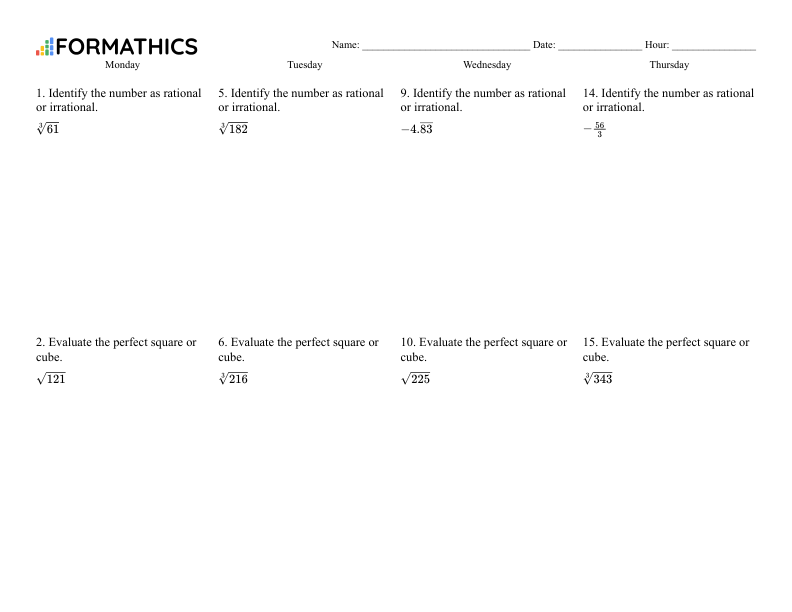
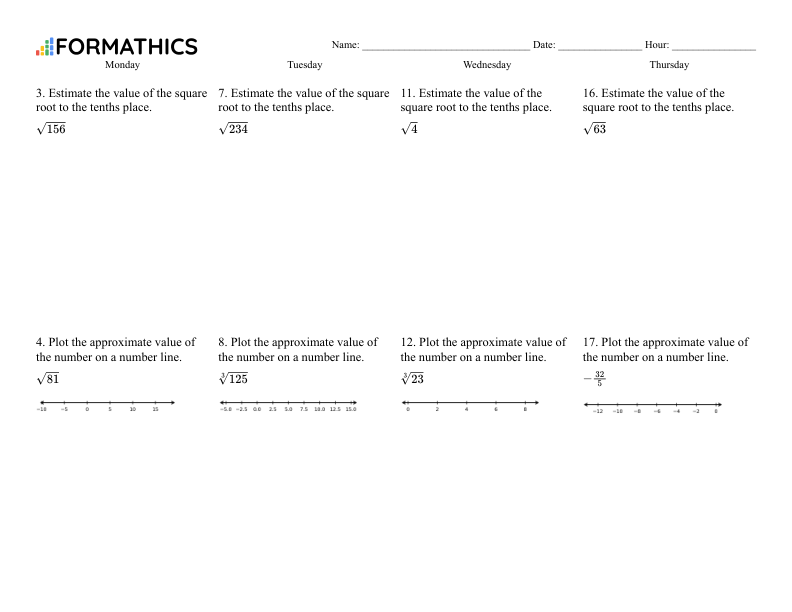

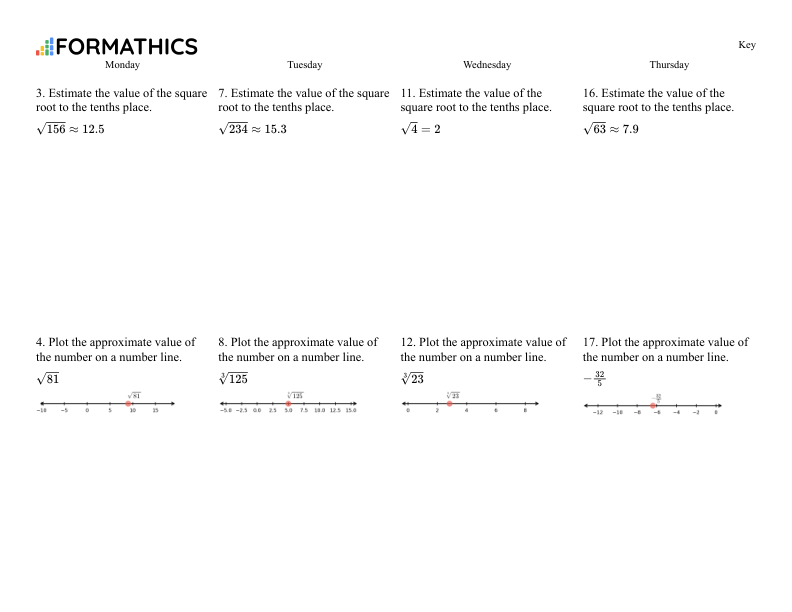
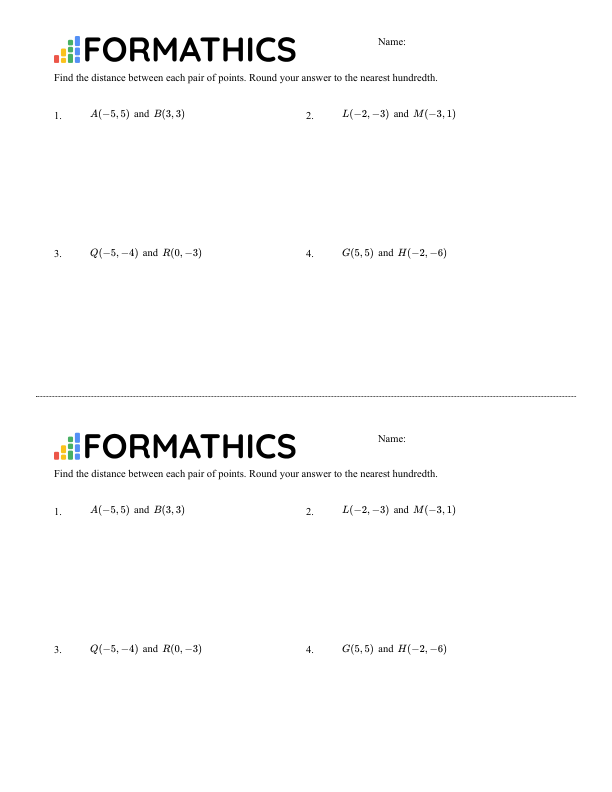
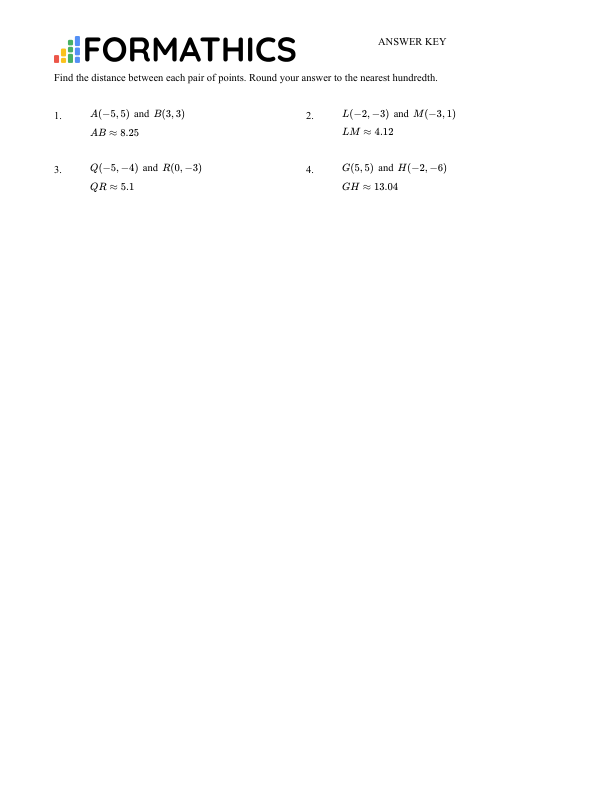
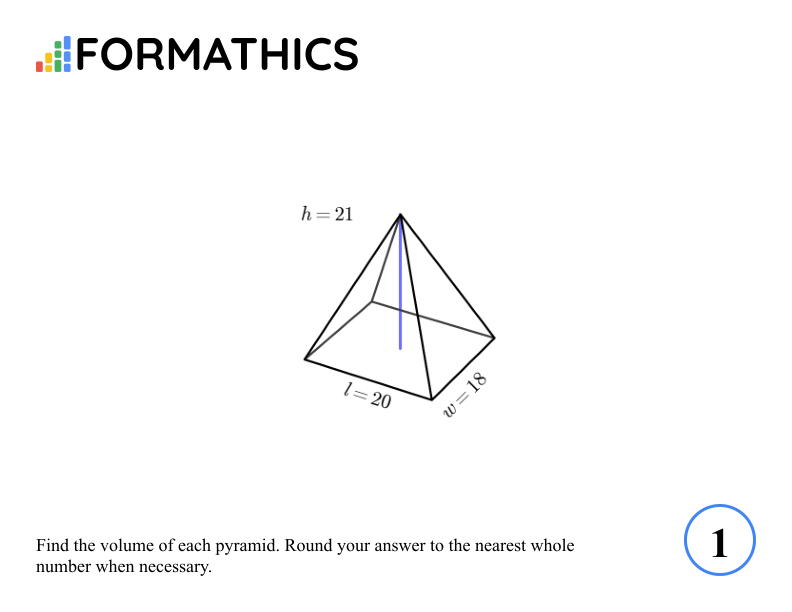
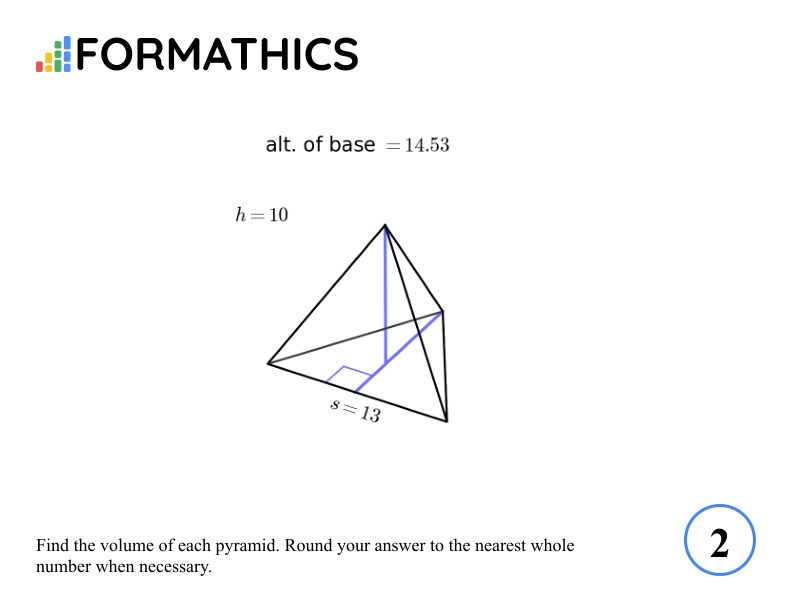
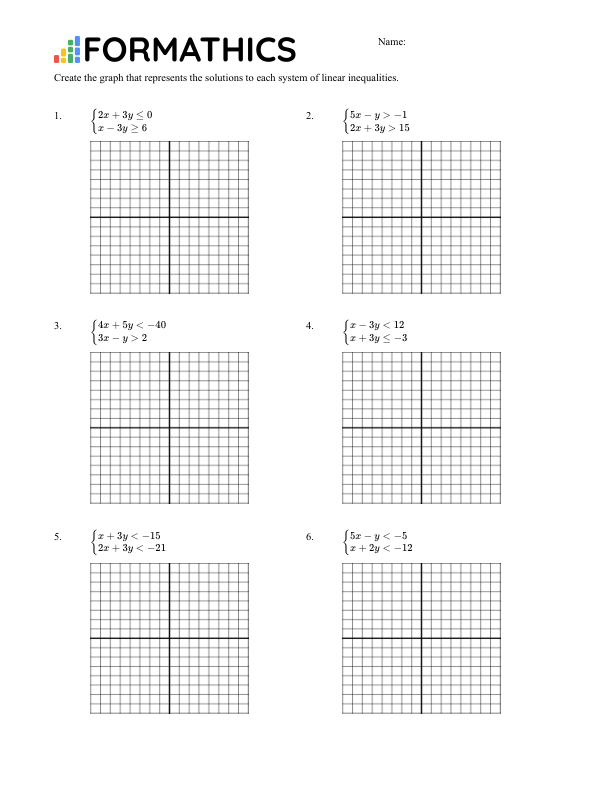
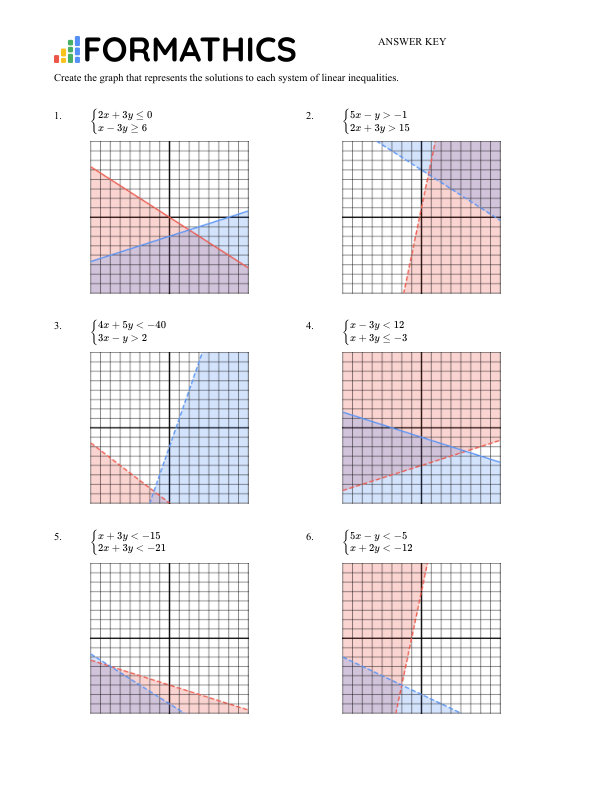
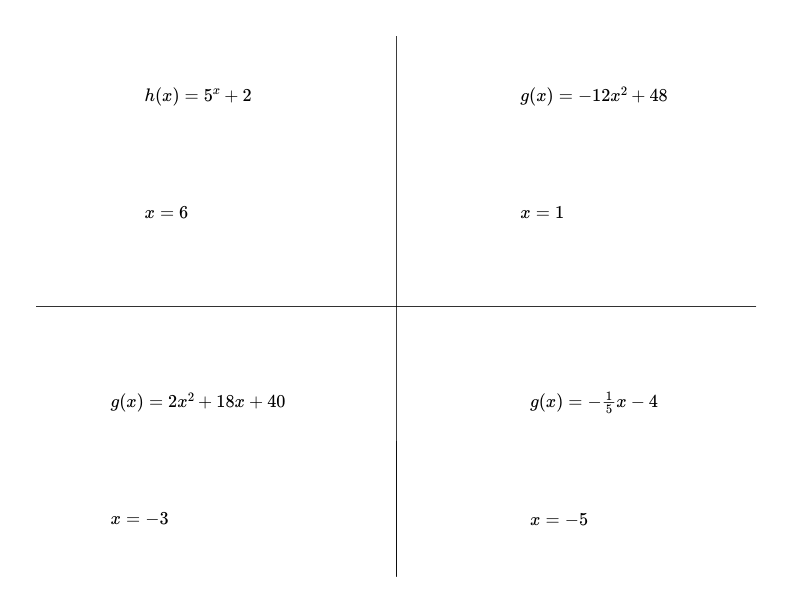
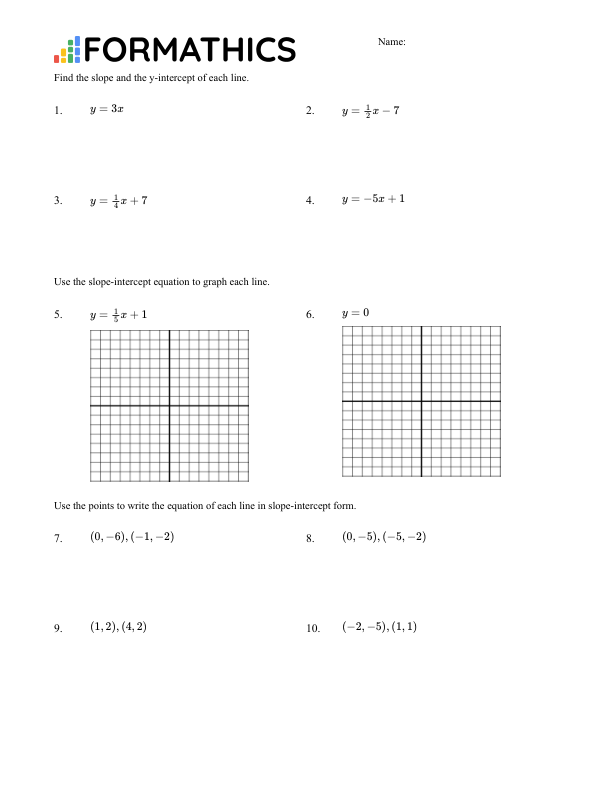
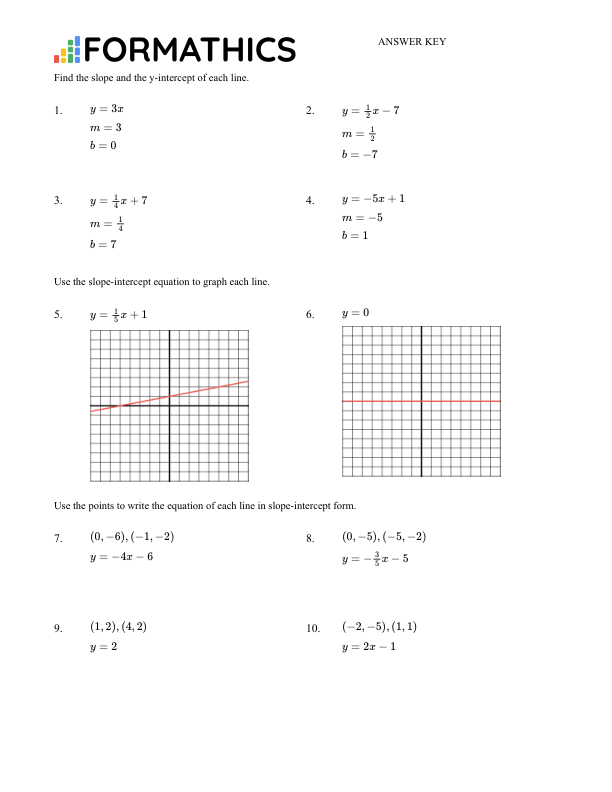
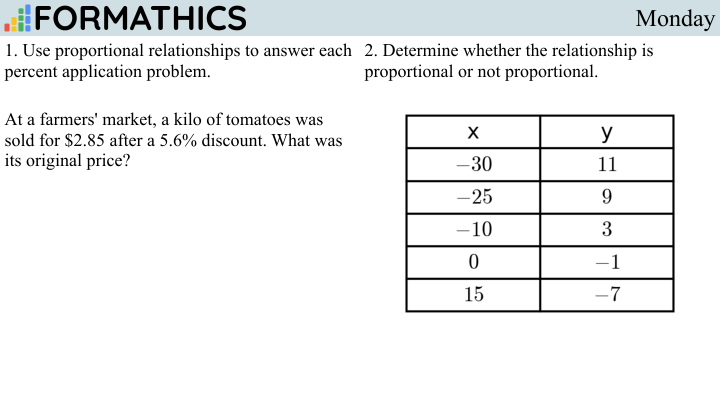
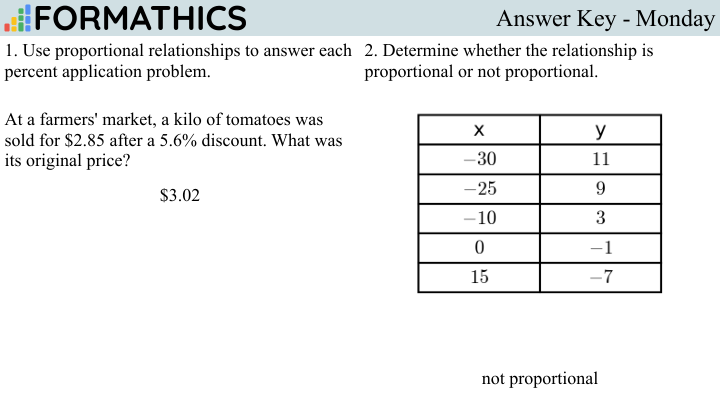
What do Others Have to Say?
Its an Easy 10 out of 10!- Parent and Previous Teacher
A really good compliment when we need to support our students with procedural fluency skills. Our curriculum is built around conceptual understanding, strategic competence, and adaptive reasoning. And as teachers, we often want that extra edge to add.- Math Faciliator
A one stop shop instead of having to utilize a bunch of different resources!- Parent and Previous Teacher
What Topics Can You Access with Formathics?
Formathics has over 400 skills, spanning the big branches of mathematics like geometry, algebra, number sense, functions, and more. Each of those skills can be created in all of our formats, with a unique set of examples any time you need. Get Formathics to have instant access to skills like:
Represent arithmetic sequences in explicit form (function notation)
Simplify exponents with the product rule (positive exponents with integer bases)
Find the surface area of prisms
Calculate probabilities using a single die (union/or - easy)
Find the area of special quadrilaterals (using coordinate planes)
Find the surface area of pyramids
Write numbers in decimal notation
Simplify exponents with the quotient rule (single variable base)
Add and subtract quadratic expressions
Simplify exponents with the power rule (single variable base)
Solve one-step equations (all)
Solve mathematical problems involving transversals (challenging)
Identify reflections shown on graphs
Find the area of rhombuses (using coordinate planes)
Solve for the real solutions of quadratic equations by factoring
Progressive - Division of fractions with denominators ≤ 9
Find missing angles in angle relationships from descriptions (challenging)
Find and position pairs of rational numbers on a coordinate plane
Convert equations from slope-intercept form to standard form
Find slope from the slope-intercept form equation
Expand linear expressions with rational coefficients (medium)
Use transformations on graphs to define congruence
Identify key features of quadratics in standard form
Determine if two lines are parallel, perpendicular, or neither (standard form)
Convert fractions to decimals using long division
Simplify exponents with the quotient rule (single integer base)
Reflect ordered pairs (no graph)
Graph a system of linear inequalities (standard form)
Calculate the range of a data set
Find the area of special quadrilaterals
Determine how many triangles can be created given the side lengths
Find adjacent angles using a diagram (easy)
Find circumference of a circle (given diagram with diameter)
Apply the standard algorithm for all operations on decimals (challenging)
Find vertical angles using a diagram (challenging)
Determine if two lines are parallel, perpendicular, or neither (slope-intercept form)
Calculate probabilities using coin flips
Determine if two figures are congruent (from ordered pairs)
Solve mathematical problems involving interior angles (challenging)
Apply the standard algorithm for the division of decimals (challenging)
Apply the standard algorithm for the subtraction of decimals (medium)
Represent arithmetic sequences in recursive form (subscript notation)
Identify the unit rate of a proportional relationship (given a description)
Find the volume of right rectangular prisms with fractional edge lengths
Reflect points over the y-axis
Calculate probabilities for single card draws (union/or)
Represent proportional relationships using equations (given a description)
Rewrite expressions into equivalent forms (challenging)
Find slope from a graph
Position rational numbers on a horizontal number line
Identify a sequence as arithmetic or geometric
Apply the formula for the area of a circle (mixed r and d)
Identify numbers as rational or irrational
Summarize numerical data sets
Rewrite exponential expressions without exponents
Add quadratic expressions
Apply the standard algorithm for the division of decimals (medium)
Find the radius of a circle given the circle's circumference
Represent proportional relationships using equations (given a table)
Calculate probabilities using dice rolls (union/or - medium)
Solve mathematical problems involving exterior angles (medium)
Find supplementary angles using a diagram (challenging)
Add and subtract integers from -20 to 20
Use long division with a remainder (dividend ≤ 1000)
Write numbers in scientific notation
Rotate figures on graphs (by multiples of 90 degrees)
Calculate probabilities for single card draws (intersection/and)
Apply the standard algorithm for the subtraction of decimals (challenging)
Solve for a quantity of interest in formulas and equations (easy)
Calculate average of rate of change over a specified interval for a function represented symbolically
Calculate the volume of cones
Calculate probabilities using coin flips (union/or)
Solve linear equations with the same variable on both sides (medium)
Represent proportional relationships using tables (given an equation)
Find adjacent angles using a diagram (challenging)
Subtract linear expressions with rational coefficients (challenging)
Recognize whether ratios are in a proportional relationship using graphs
Graph linear functions from various forms and find intercepts
Plot ratio values
Find the circumference of a circle given the circle's area
Find the area of rhombuses (with measurements for area and perimeter)
Reflect figures on graphs (over both axes)
Expand linear expressions with rational coefficients (challenging)
Find the volume of pyramids
Dilate points on graphs
Calculate probabilities using dice rolls (intersection/and - easy)
Calculate missing heights of cylinders and cones
Describe translations shown on graphs
Find the equation of lines parallel to given lines
Solve real-world problems involving the division of fractions
Simplify complex exponential expressions (mixed integer bases)
Determine how many triangles can be created given the angle measures
Determine the measures of center of a data set
Calculate probabilities using a single die (intersection/and - easy)
Solve mathematical problems involving exterior angles (easy)
Progressive - Division of fractions with denominators ≤ 9
Solve mathematical problems involving transversals (easy)
Convert equations from point-slope form to standard form
Convert time between different units
Find the area of kites
Calculate probabilities using a single die (challenging)
Represent geometric sequences in recursive form (subscript notation)
Apply the standard algorithm for the subtraction of decimals (easy)
Write inequalities from number lines
Solve linear equations with the same variable on both sides (easy)
Compare slopes of linear functions shown in different ways
Find the area of a circle given the circle's circumference
Calculate the volume of cylinders, cones, and spheres
Find the perimeter of triangles on a coordinate plane
Solve multi-step inequalities (easy)
Find missing angles in angle relationships from descriptions (easy)
Find the least common multiple of two whole numbers less than or equal to 12 to add and subtract fractions with unlike denominators
Calculate the volume of spheres
Multiply rational numbers
Conduct transformations with figures (on graphs)
Graph lines using slope-intercept form
Find the length of a rectangle's diagonal
Simplify exponents with the power rule (single integer base)
Apply the standard algorithm for all operations on decimals (easy)
Identify transformations (from ordered pairs)
Find equivalent unit ratios
Use proportional relationships to solve percent problems (mixed)
Solve one-step equations (integers)
Find the area of triangles (using coordinate planes)
Identify key features of quadratic functions from graphs
Calculate missing radii of cones
Find slope from two points
Represent proportional relationships using graphs (given an equation)
Find the area of trapezoids (using coordinate planes)
Solve two-step inequalities (easy)
Solve linear equations with the same variable on both sides (proportional)
Find the area of squares
Solve one-step equations (decimals)
Examine the effects of extreme data points on spread
Find the missing leg in a right triangle (hypotenuse in radical form)
Calculate the mean absolute deviation of a data set
Display numerical data on box plots
Locate numbers approximately on a number line
Use coordinates to find the midpoint of a line segment
Write the factored form of quadratics from graphs
Multiply linear expressions
Convert equations from standard form to slope-intercept form
Divide numbers in scientific and decimal notation
Solve one-step equations (fractions)
Find complementary angles using a diagram (medium)
Simplify exponents with the quotient rule (multiple bases)
Find the vertex of quadratics by completing the square (easy)
List the ordered pairs for each relationship given its mapping
Sketch graphs of exponential functions
Describe dilations shown on graphs
Use proportional relationships to solve real-world problems
Identify rotations shown on graphs
Recognize functions given tables
Translate points on graphs
Determine the measures of center of a dot plot
Solve linear inequalities with the same variable on both sides (proportional)
Find the part given the whole and the percent (benchmark percents)
Find growth/decay rates from exponential equations
Foundational - Division of fractions with denominators ≤ 6
Solve multi-step equations (medium)
Find circumference of a circle (given description of radius or diameter)
Find growth/decay rates for exponential functions given a table
Find the area of squares (using coordinate planes)
Solve linear inequalities with the same variable on both sides (challenging)
Identify the unit rate of a proportional relationship (given a graph)
Find supplementary angles using a diagram (easy)
Estimate the value of square roots to the tenths place
Subtract quadratic expressions
Use long division (dividend ≤ 1000)
Describe the shape of data from box plots
Use ratios to solve problems
Write statements of order for rational numbers
Calculate missing radii of spheres
Determine if two lines are parallel, perpendicular, or neither (mixed forms)
Find the perimeter of a right triangle on a coordinate plane
Calculate probabilities using a single die (union/or - challenging)
Find missing angles in angle relationships from descriptions (medium)
Calculate probabilities using dice rolls (intersection/and - challenging)
Calculate probabilities using dice rolls (union/or - challenging)
Find the area of trapezoids
Find the area of rectangles
Apply the standard algorithm for the addition of decimals (easy)
Solve systems by graphing lines
Solve quadratics by completing the square (irrational solutions)
Find the percent given the whole and the part (benchmark percents)
Divide rational numbers
Use long division with a remainder (dividend ≥ 1000)
Solve mathematical area problems by graphing points in all four quadrants of the coordinate plane
Use long division (dividend ≤ 100)
Complete missing values in ratio tables
Use proportional relationships to solve percent problems (percent decrease)
Solve linear equations with the same variable on both sides (challenging)
Find the vertex of quadratics by completing the square
Find the area of triangles
Calculate probabilities using a single die (intersection/and - medium)
Apply the standard algorithm for all operations on decimals (medium)
Find the missing hypotenuse (in radical form)
Estimate the value of cube roots to the tenths place
Reflect ordered pairs (on graph)
Compare the size of numbers by plotting them on a number line
Convert quadratics (with rational solutions) from standard form into vertex form
Represent arithmetic sequences in recursive form (function notation)
Use coordinates to find the endpoint of a line segment
Calculate probabilities using a single die
Simplify exponents with the product rule (single variable base)
Calculate missing heights of cylinders
Simplify exponents with the power rule (positive exponents with integer bases)
Find the coordinates of missing vertices in rectangles
Graph functions given in function notation
Represent geometric sequences in explicit form (subscript notation)
Create linear inequalities from graphs (slope-intercept form)
Check solutions to systems of linear inequalites (standard form)
Calculate the interquartile range of a data set
Calculate probabilities using a single die (intersection/and - challenging)
Use substitution to determine whether a given number makes an equation true
Find the area of triangles (with measurements for area and perimeter)
Understand signs of numbers in ordered pairs as indicating locations in quadrants
Recognize whether ratios are in a proportional relationship using tables
Solve quadratics by taking square roots
Use substitution to determine whether a given number makes an inequality true
Simplify complex exponential expressions (single integer base)
Use proportional relationships to solve percent problems (two-step)
Represent proportional relationships using graphs (given a description)
Use proportional relationships to solve percent problems (backward)
Multiply numbers in scientific and decimal notation
Elevated - Division of fractions with denominators ≤ 12
Calculate probabilities using a single die (union/or - medium)
Display numerical data on dot plots
Solve mathematical problems involving interior angles (easy)
Find the whole given the part and the percent
Solve two-step equations (challenging)
Find the area of special quadrilaterals (with measurements for area and perimeter)
Elevated - Division of fractions with denominators ≤ 12
Solve systems with elimination
Calculate probabilities for single card draws
Apply the standard algorithm for the multiplication of decimals (easy)
Rotate points 90 degrees CW
Convert and manipulate measurements for distances in the customary system
Solve systems with substitution or elimination
Percent word problems
Identify outliers
Solve real-world problems involving long division
Apply the standard algorithm for the addition of decimals (challenging)
Evaluate perfect squares and cubes (positive numbers ≤ to 400)
Add and subtract rational numbers
Write the slope-intercept form equation from a table
Find vertical/horizontal distances between points (with ordered pairs)
Represent geometric sequences in recursive form (function notation)
Represent solutions of inequalities on number lines
Dilate figures on graphs
Solve two-step inequalities (medium)
Compare numbers written in scientific notation
Solve linear inequalities with the same variable on both sides (medium)
Factor quadratics with integral roots and GCFs
Represent geometric sequences in explicit form (function notation)
Write the slope-intercept form equation from two points
Represent arithmetic sequences in explicit form (subscript notation)
Find diagonals of rectangular prisms
Solve mathematical problems involving exterior angles (challenging)
Write exponential functions using regression
Solve systems with substitution
Find diagonals of rectangular prisms (in radical form)
Create scatter plots given mappings of relationships
Represent proportional relationships using tables (given a description)
Conduct a sequence of transformations (on ordered pairs)
Simplify exponents with the product rule (positive exponents with variable bases)
Find complementary angles using a diagram (challenging)
Determine how many triangles can be created given the side lengths or angle measures
Add linear expressions with rational coefficients (easy)
Elevated - Division of fractions with denominators ≤ 12
Reflect points over both axes
Recognize linear equations as having one, none, or infinite solutions (medium)
Calculate samples spaces (word problems)
Use a graph to find the midpoint of a line segment
Find slope from a table
Graph quadratic functions from the standard form equation (a=1)
Calculate missing radii of cylinders and cones
Divide prisms
Subtract linear expressions with rational coefficients (medium)
Write the slope-intercept form equation using a point and the slope
Write the factored form of quadratics from graphs (a=1)
Find area of a circle (given description of radius or diameter)
Calculate probabilities for double card draws (without replacement)
Find the percent given the whole and the part
Recognize functions given scatter plots
Sketch graphs of exponential functions (quadrant I)
Find the area of kites (using coordinate planes)
Solve mathematical perimeter problems by graphing points in all four quadrants of the coordinate plane
Recognize linear equations as having one, none, or infinite solutions (challenging)
Find vertical/horizontal distances between points (on a graph)
Solve linear inequalities with the same variable on both sides (easy)
Simplify exponents with the quotient rule (positive exponents with variable bases)
Simplify exponents with the product rule (multiple bases)
Find the missing hypotenuse in a right triangle
Create systems of linear inequalities from graphs (slope-intercept form)
Simplify exponents with the product rule (single integer base)
Create mappings given ordered pairs
Simplify exponents with the quotient rule (positive exponents with integer bases)
Simplify complex exponential expressions (single variable base)
Rotate points 180 degrees
Apply the standard algorithm for the multiplication of decimals (medium)
Write expressions from real-world scenarios
Solve quadratics by completing the square (rational solutions)
Convert and manipulate measurements in the metric system
Calculate probabilities using coin flips (intersection/and)
Build arithmetic and geometric sequences given a table (subscript notation)
Check solutions to linear inequalites
Convert perfect square trinomials (with/without GCFs) from standard form into vertex form
Use long division (dividend ≥ 1000)
Simplify complex exponential expressions (multiple variable bases)
Rotate points 270 degrees CCW
Find the area of rhombuses
Find the volume of prisms
Solve quadratics by completing the square (imaginary solutions)
Solve two-step equations (easy)
Calculate probabilities using dice rolls (intersection/and - medium)
Write the slope-intercept form equation from a graph
Find adjacent angles using a diagram (medium)
Simplify exponents with the power rule (multiple bases)
Solve multi-step equations (challenging)
Recognize functions given ordered pairs
Recognize linear equations as having one, none, or infinite solutions (easy)
Progressive - Division of fractions with denominators ≤ 9
Apply the standard algorithm for the division of decimals (easy)
Examine the effects of extreme data points on center
Write and solve expressions using real-world scenarios
Create mappings given scatter plots
Calculate the volume of cylinders
Graph a linear inequality (slope-intercept form)
Find the perimeter of a quadrilateral on a coordinate plane
Add linear expressions with rational coefficients (medium)
Translate figures on graphs
Express how much larger numbers in scientific notation are
Simplify exponents with the power rule (positive exponents with variable bases)
Add and subtract linear expressions
Translate between explicit and recursive forms of arithmetic sequences (subscript notation)
Solve multi-step inequalities (challenging)
Factor quadratics with integral roots (a=1)
Add linear expressions with rational coefficients (challenging)
Find the radius of a circle given the circle's area
Factor linear expressions with an integer GCF
Conduct all operations on rational numbers
Find supplementary angles using a diagram (medium)
Find the missing leg in a right triangle (hypotenuse rounded)
Divide numbers in scientific notation
Find the whole given the part and the percent (benchmark percents)
Find the height of a prism by using the volume
Calculate missing radii of cylinders
Represent proportional relationships using equations (given a graph)
Convert equations from point-slope form to slope-intercept form
Foundational - Division of fractions with denominators ≤ 6
Graph a linear inequality (standard form)
Find the greatest common factor of two whole numbers less than or equal to 100
Represent data with box plots
Complete tables using exponential equations
Find the area of rectangles (using coordinate planes)
Rotate points in multiples of 90 degrees
Solve for a quantity of interest in formulas and equations (medium)
Evaluate functions expressed in function notation
Find vertical angles using a diagram (medium)
Use proportional relationships to solve percent problems (percent increase)
Identify the unit rate of a proportional relationship (given a table)
Use long division with a remainder (dividend ≤ 100)
Rewrite expressions into equivalent forms (medium)
Use a graph to find the endpoint of a line segment
Calculate missing heights of cones
Calculate probabilities for double card draws (replacement)
Find the unique prime factorization for a whole number
Solve multi-step equations (easy)
Find the area of kites (with measurements for area and perimeter)
Calculate probabilities using dice rolls (union/or - easy)
Calculate probabilities using coin flips (mixed)
Foundational - Division of fractions with denominators ≤ 6
Find the part given the whole and the percent
Reflect points over the x-axis
Graph quadratic functions using factors (a=1)
Solve two-step inequalities (challenging)
Find complementary angles using a diagram (easy)
Solve multi-step inequalities (medium)
Find the area of trapezoids (with measurements for area and perimeter)
Solve systems with substitution (mixed forms)
Describe the shape of data from dot plots
Rewrite expressions into equivalent forms (easy)
Find the equation of lines perpendicular to given lines
Recognize functions given a map
Calculate probabilities using dice rolls
Solve two-step equations (medium)
Solve quadratics by completing the square (integer solutions)
Solve mathematical problems involving transversals (medium)
Calculate measures of center and spread
Find the least common multiple of two whole numbers less than or equal to 12
Find the distance between two points
Apply the standard algorithm for the addition of decimals (medium)
Solve mathematical problems involving interior angles (medium)
Summarize numerical data sets from dotplots
Find vertical angles using a diagram (easy)
Write expressions from mathematical descriptions
Find the height of a pyramid by using the volume
Translate between explicit and recursive forms of geometric sequences (subscript notation)
Use the greatest common factor and the distributive property to rewrite the sum of two whole numbers, each less than or equal to 100
Expand linear expressions with rational coefficients (easy)
Apply the standard algorithm for the multiplication of decimals (challenging)
Write a percent of a quantity as a ratio per 100
Multiply numbers in scientific notation
Find circumference of a circle (given diagram with radius)
Find area of a circle (given diagram with radius)
Where is Formathics Making an Impact?
Formathics is proudly available in 39 states, with more on the way. Check out our map to see if we are already in your area!
Legend
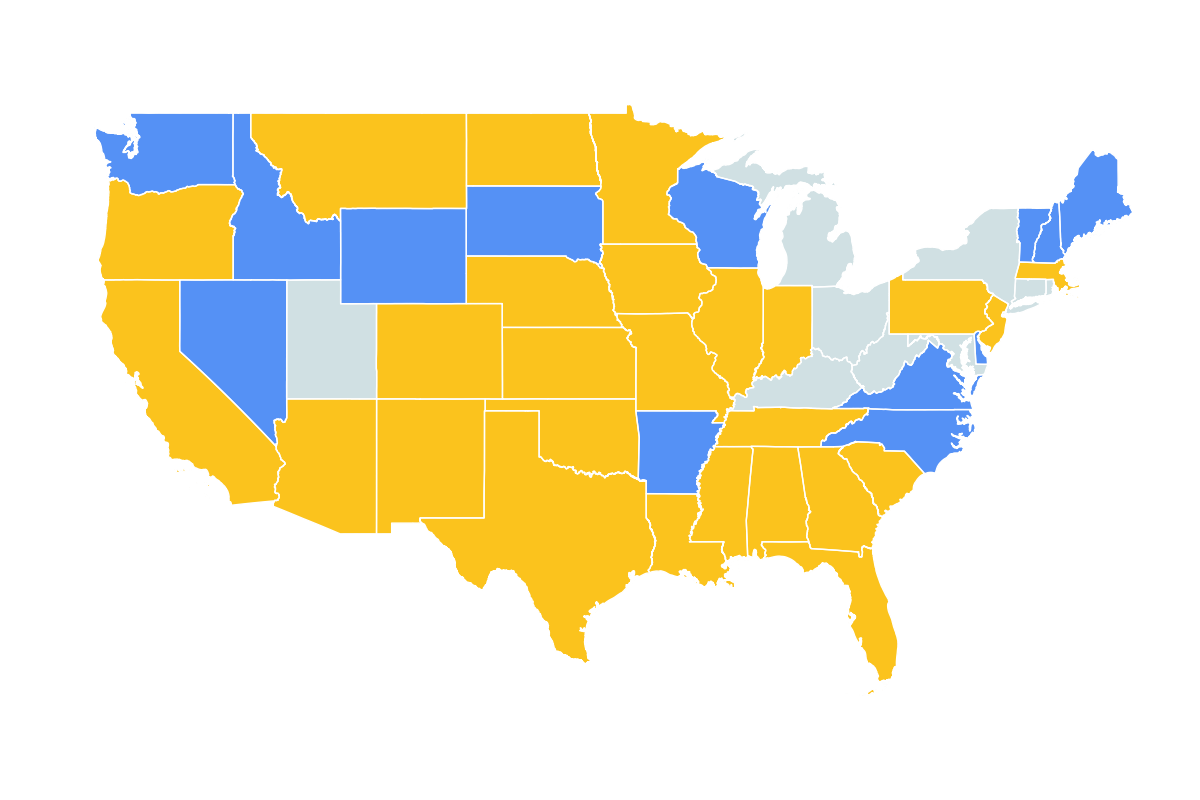
Prefer a List? Hover Over Your State For Details
- Alabama
- Alaska
- Arizona
- Arkansas
- California
- Colorado
- Connecticut
- Delaware
- Florida
- Georgia
- Hawaii
- Idaho
- Illinois
- Indiana
- Iowa
- Kansas
- Kentucky
- Louisiana
- Maine
- Maryland
- Massachusetts
- Michigan
- Minnesota
- Mississippi
- Missouri
- Montana
- Nebraska
- Nevada
- New Hampshire
- New Jersey
- New Mexico
- New York
- North Carolina
- North Dakota
- Ohio
- Oklahoma
- Oregon
- Pennsylvania
- Rhode Island
- South Carolina
- South Dakota
- Tennessee
- Texas
- Utah
- Vermont
- Virginia
- Washington
- West Virginia
- Wisconsin
- Wyoming